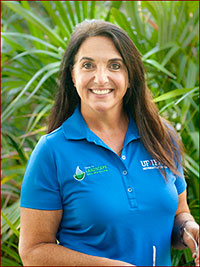Wendy's Wanderings
October 12, 2017
When the Wind Blows
In our Master Gardener trainings we have been taught to recognize hazardous trees and to wage an educated guess on whether a tree will fail. Often times we can identify hazardous trees with a casual glance, if there's black ooze coming out of the crotch of the tree or if there are mushrooms growing out of the bark. If we look with more attention to the tree canopy, we might see decline and dead or dying branches; that is also an indication of poor tree health. In studying the trunk we could see hollows or old injuries that could give us a clue that the tree is a goner.
Prior to the latest hurricane, I felt that I knew which of my neighborhood trees would fail and which trees would remain standing strong. Post-Irma, I was surprised to see many of the trees that I figured would be on the ground or in pieces were still standing, and some of the trees that I thought looked relatively healthy had fallen across streets or unluckily on homes.
Those trees I believed were hazardous will ultimately fail—we just don't know when. Preventing their damage in the future is the best way to prepare for the next storm. This can be done by selecting the right tree species for your lot, putting them in the right place, planting high quality trees, and having a structural pruning program for young and mature trees. Contact a certified arborist to help you with the pruning program; your county Extension agent will know who they are. You can also go the ISA website at http://www.isa-arbor.com/ to find a list of names of professionals in your area.
-- Wendy Wilber


